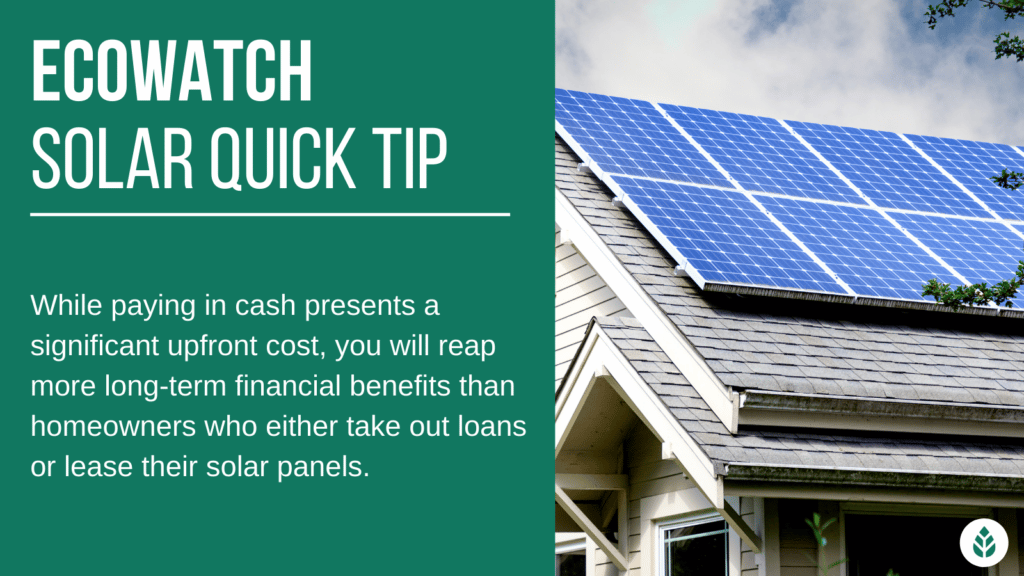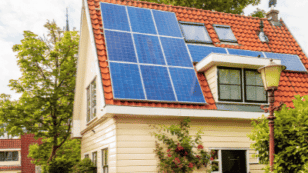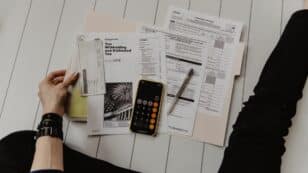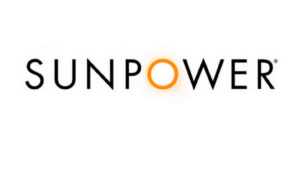
Your Guide to Solar Panels in Alabama
Alabama is ranked 33rd in the country by the Solar Energy Industries Association (SEIA) in terms of solar adoption.1 Despite this lackluster rating, solar customers in the state save an average of nearly $30,000 over time with their photovoltaic (PV) panels, which is about 50% higher than most other states in the country.
Each product and or company featured here has been independently selected by the writer. You can learn more about our review methodology here. If you make a purchase using the links included, we may earn commission.
Most Alabamans find that solar adoption is a great investment. Energy savings in the state hit record-high numbers due to the well-above-average energy consumption in the area, with homeowners consuming more electricity than nearly every other state in the country.2
While the average cost of solar panels in the area is above average due to larger solar system size requirements, the state incentives and solar rebates in Alabama are decent and can help bring down installation costs by thousands of dollars.
Plus, the state sees more sunny days per year than most others, which leaves residents with plenty of sunlight to maximize production and savings over time.3
Below, we’ll walk through the process you need to complete to go solar in your area. You can also use the following links to jump to a particular section for more information.
Step 1: What to Consider When Buying Solar Panels
Step 2: Getting a Quote from a Solar Provider
Step 3: Signing a Solar Contract
Step 4: What to Expect on Solar Panel Installation Day
Step 5: Final Inspection for Installed Solar Panels

SunPower

Nationwide Service
Average cost
Pros
- Most efficient panels on the market
- National coverage
- Cradle to Cradle sustainability certification
- Great warranty coverage
Cons
- Expensive
- Customer service varies by local dealer

Creative Solar USA

Local Service
Average cost
Pros
- Representatives are experts on local policies
- Comprehensive service offerings
- Many years of experience
Cons
- No leases or PPAs
- Limited brands of solar equipment available

Eagle Solar & Light

Regional Service
Average cost
Pros
- NABCEP-certified technicians
- Offers products from leading manufacturers
- Locally owned and operated
- Award-winning company
Cons
- Relatively young company
- Limited information available on website
- Slightly limited service offerings
Step 1: What to Consider When Buying Solar Panels in Alabama
Since solar adoption is so expensive in your state, it’s worth doing some research on solar viability in your particular area before you jump in and start getting quotes. We’ll include some tips in the sections below for determining whether or not solar is a good fit for you and your property.
Research If Solar Panels Are a Good Fit For You in Alabama
Solar usually turns out to be a good financial decision in Alabama, but the return on investment (ROI) you can expect can vary based on where you live.
We recommend starting your research by estimating how many solar panels you need to offset your energy consumption. You can use our solar calculator to figure this out. The calculator uses satellite imaging and your monthly energy bill to estimate your solar power system size requirements.
The average solar system size in Alabama is around 11.5 kilowatts (kW). If you need a significantly larger system, that means there are factors at play that may make your system less valuable, like shading on your roof.
Next, we suggest looking into local weather conditions. Most of the state sees more sunny days per year than other areas in the country, but some cities see higher numbers of cloudy or rainy days. PV panels don’t work as well in cloudy conditions, so customers in sunnier areas will see more value from installing PV systems.
One of the most crucial things to think about is your access to net metering — also called net energy metering or NEM for short. Net metering is a solar buyback policy that lets you sell excess energy production to your electric company for credits to future energy bills. Ultimately, NEM helps increase your long-term savings and reduce effective electricity costs.
The Alabama Public Service Commission does not mandate net energy metering — largely because there is no Renewable Portfolio Standard (RPS) goal in place to incentivize it. As such, your access to the program will depend entirely on your utility company and whether or not it chooses to offer NEM.
For example, Alabama Power doesn’t offer traditional net energy metering, but they do have the Rate PAE (Purchase of Alternate Energy) program, which works somewhat similarly. Rather than getting charged for the net usage, you get paid a reduced rate for exported energy, and you still pay the retail rate for imported power.4
Rate PAE isn’t ideal, but it’s better than not having a solar buyback program. Ultimately, it will help you save money on your energy bills and will effectively reduce your electricity rate.
Alabama Municipal Electric Authority (AMEA) doesn’t offer net metering or any equivalent solar buyback program. Central Alabama Electric Cooperative — a much smaller provider — has a standard net metering policy, although it uses the avoided-cost rate for energy credits, which is less than ideal.5
In the table below, we’ll include some solar statistics and cost figures for the Yellowhammer State alongside the same numbers for the U.S. as a whole. This should help quantify just how valuable solar adoption is in your area.
| Alabama State Average | United States National Average | |
| Solar Power System Size Required | 11.5 kW | 9 kW |
| Typical Cost Per Watt to Install Photovoltaic (PV) Equipment | $2.45 | $2.66 |
| Average Total System Cost Before Federal Solar Income Tax Credit | $28,175 | $23,940 |
| Average Federal Solar Tax Credit Value | $8,453 | $7,182 |
| Average Total System Cost After Federal Credit | $19,723 | $16,758 |
| Average Panel Payback Period | 11 years | 12 years |
| Average Lifetime Savings of Converting to Solar | $28,590 | $22,379 |
Most notably, the payback period for PV panels in Alabama is below average — which is great— and the total lifetime savings is well above average. As such, solar is more valuable in Alabama than in most other states.
Research How to Finance Solar Panels
Once you’ve done your research and have confirmed that solar is a good financial investment for you, you can start looking into how you’re going to afford your system. The average solar array in Alabama is quite costly because of its large size — totaling over $28,000 before tax incentives and rebates. But that’s it’s important that you understand your energy needs and payment options to figure out how to best fit solar panels into your budget
We suggest first getting an idea of what your panels will cost, which means you need to know the size system you’ll need for your home. You can use our solar calculator if you haven’t already to get a rough idea of how many panels you’ll need. You can then multiply the watts required by the typical per-watt cost in the state — $2.45 — to get an estimated total.
Next, we suggest estimating how much solar can save you on your utility bills. Your solar panel system will ideally be sized to offset most of your consumption and could eliminate your monthly energy bills if you have access to a good net metering policy.
Finally, you can use these estimates to determine which solar financing option works best. You have four options available to you:
- Cash purchase: With a cash purchase, you pay for your entire system upfront. This is quite costly initially, but it provides you with the lowest all-in system price, the shortest payback period and the highest ROI. You can take all solar incentives with this option.
- Solar loan: With a solar loan, you take out a loan and pay it back over time with interest. The benefit is a much lower and more accessible upfront payment and access to all solar incentives, including the federal solar investment tax credit (ITC). The downside is your payback period will be extended, and your total system cost will be higher due to the interest.
- Solar lease: With a solar lease, you pay a fixed monthly fee — lower than your electric bill — to rent the panels, and you get to use the electricity they generate to offset your energy bills. You cannot take the federal tax credit with this option, and your ROI over time will be much lower than if you pay with cash or a loan. However, there is no down payment required, so it’s accessible to most customers.
- Power Purchase Agreement (PPA): With a PPA, a company installs panels at no cost to you, and then you get to buy reduced-cost energy from the company rather than from your power supplier. This option yields the lowest ROI overall and doesn’t let you take advantage of the federal credit. However, it’s just as accessible as a lease.
Step 2: Getting a Quote from a Solar Provider
Once you’ve explored the solar financing options, you can start the process of actually getting quotes from companies in your area. We’ll walk through this process and provide some tips for getting quality quotes in the sections below.
Picking a Solar Installer
One of the most time-consuming parts of going solar for you will be choosing a reliable system installer. The SEIA reports that there are around ten local solar contractors that serve the state, plus national and regional providers to choose from.6 Ideally, you want to research all of these and find the best one for your needs.
We suggest prioritizing the below qualities in an installer:
- A minimum of five years of experience in the solar industry.
- Good prices for the quality of equipment and service.
- Access to the payment options that work for you.
- Lengthy warranty coverage (we’ll discuss this in greater depth later).
- Technicians with certification from the North American Board of Certified Energy Practitioners (NABCEP).
- A history of positive customer reviews and relatively few complaints filed with the Better Business Bureau (BBB).
Below are some of what we believe are the best solar providers in the State of Alabama:
- SunPower — National installer
- Eagle Solar & Light — Regional installer
- Creative Solar USA — Regional installer
- Solar Technology Alabama — Local installer
What to Expect After Requesting a Quote
Once you submit your contact information to an installer to get a quote, a sales representative should reach out — usually within 24 to 48 hours — to set up a consultation. Most consultations take place virtually, but some solar companies will meet in person if you prefer.
You should have a recent energy bill handy to provide during the consultation. You’ll also need to provide some information about yourself, your home and your expectations related to adopting solar.
Your sales rep should send someone out to your property to take measurements of your roof and complete an in-person inspection after your consultation. We recommend choosing a different provider if the one you’re speaking with says they can do everything virtually, as this often leads to mistakes and inaccurate estimates.
Finally, your home solar project will be passed on to the design team, after which you’ll get your formal solar proposal. There are a few things you’ll want to look for in the proposal, including the following:
- The total system cost before and after Alabama’s solar incentives and rebates are factored in.
- The size of your system and how much energy it’s expected to generate monthly and annually.
- How many panels you’ll need and a detailed diagram as to where and how they’ll be installed.
- An estimated payback period where your panels will start to provide an ROI.
- An estimated lifetime savings provided by your panels.
- The type of equipment — panels, inverters, solar batteries and more — that will be installed and where each component will be mounted.
- An estimated installation timeline.
- Additional fees for permits and inspections, if applicable
- Warranty information.
- Payment information and scheduling.
As time-consuming as the quote-gathering process is, we suggest getting at least two to three estimates for your system. Having a few quotes will let you compare to find the best bang for your buck and it might lead to one of the more expensive companies to price match — potentially saving you money on top-brand solar panels.
Consider Purchasing Solar Accessories
When you’re getting quotes for your panels and inverters — the essential equipment — we also recommend you consider add-on products. Choosing add-ons upfront will usually lead to a potential discount because you can use the federal credit to reduce your taxes even more based on the price.
Below are some of the most popular add-on products Alabamans choose, along with brief descriptions of each.
- Solar batteries: Solar storage solutions let you overproduce with your panels and use the stored energy when your panels fail to generate sufficient energy, like at night or on cloudy days. Batteries are very popular in your area because many customers don’t have access to net metering. Even if they do, the energy credits they earn typically aren’t at the full retail rate. Batteries let you effectively enjoy net energy metering even if you don’t have access to the program.
- Electric Vehicle (EV) chargers: EVs are increasingly popular in your area, and they’re expected to become many times more prominent in the next decade or so.7 EV chargers are a convenient way to save on travel costs and see even more benefits from your panels.
- Solar carports: Alabamans need unusually large systems to offset their above-average energy needs. In some cases, the 11.5 kW system required in the area just won’t fit on the roof or at least on the south-facing portion, which is best for panel placement. Solar carports are a popular way to add more space for installing panels on your property.
- Energy efficiency upgrades: Since the electricity consumption is so high in AL, many residents couple their panels with energy efficiency upgrades to reduce electric bills even further.8 Many solar installers offer efficiency upgrades like solar water heaters, solar heating and cooling systems and more.
Step 3: Signing a Solar Contract in Alabama
After you’ve decided what components you want to be installed and have gotten a quote that matches your expectations, you can move forward and sign the solar contract from that provider. We’ll include some information on what to look for in a solar contract in the following sections.
How Do Solar Warranties Work in Alabama?
One of the first things we suggest you look for is the warranty coverage that’s included in your contract. There are three types of solar warranties you’ll want to consider, all of which are helpful to protect your solar investment.
- Labor warranties: A labor warranty ensures that your panels are installed properly and that any damage resulting from an improper installation is covered. These typically don’t include roof leaks, although some companies cover roof leaks separately. In an area like Alabama, where the annual rainfall is about 1.5x the national average, roof leak coverage is well worth paying more for, if possible.9 The typical labor warranty lasts for ten years.
- Equipment warranties: Equipment warranties cover manufacturer defects that can cause serious problems for your system and your home. These warranties usually last for 25 years.
- Panel performance warranties: These warranties guarantee that the efficiency of your panels won’t drop below a certain amount in a given time frame, usually 80% over 20 to 25 years. Longer ones are, of course, better, and you should consider the starting efficiency as well.
When Can I Expect Solar Service to Go Live?
Most Alabamans wait between two and three months from when they sign their solar contracts to the day the PV equipment is installed. There are a few things that can shorten or lengthen this timeline, including the following:
- Permitting timelines can vary among municipalities.
- Delays in installation can occur if your installer is backed up with other solar projects.
- Some products, like Tesla Powerwalls, are in high demand and can be back-ordered, which can cause delays in project completion.
Additionally, Alabama residents see a lot of rain and extreme weather, and installing rooftop solar arrays in wet or severe conditions can be dangerous. As such, the weather conditions can cause delays at times, although they should be minimal.
Solar Panel Permits in Alabama
All local municipalities in the state mandate building permits, electrical permits or both for all solar conversions. In almost all cases, your installer will file for the permits for you — this might even be required if your city needs an electrical permit — so you don’t have to worry about filing paperwork or figuring out what permits you need.
While you won’t typically have to file for the permits, you will be the one paying for them. They usually cost between $100 and $250.
Just as an example, the Huntsville building department prices permits based on the cost of the work being done multiplied by 0.0055%.10 Given the average cost of solar panels in Arizona, that’s a typical permit cost of around $154.
The City of Mobile uses a percentage as well — 0.6% with a minimum charge of $200.11 Since 0.6% of the usual solar energy system total in the area is around $169, the total solar permit cost would be $200.
Birmingham charges $9.50 per $1,000 you spend on your project to price out permits.12 This comes out to a more costly $266.
Keep in mind that permits are necessary for your safety and the safety of the homes around you. Neglecting to pull permits can result in additional fees, like the $100 minimum fee imposed by the City of Montgomery for failing to get proper solar permits.13
You can reach out to your installer for information about permit fees in your area, or you can contact your local building department. Your solar company should also include permit costs in your initial estimate.
Solar & Utility Interconnection
Interconnection is how your solar array is connected to and interacts with the electric grid. Through the use of devices called bidirectional meters, interconnection allows for net metering, which is massively beneficial to Alabama solar customers.
Even if net energy metering isn’t available to you, your system will require an interconnection permit from your electricity provider to be grid-connected. This is necessary to be able to switch back and forth between pulling power from your panels and from the grid.
For example, Alabama Power requires a distributed energy resources (DER) interconnection form to be filled out and submitted prior to connecting your system.14 The Central Alabama Electric Cooperative has a similar application form for signing up for connection to the grid.15
In most cases, the application for interconnection will be filed by your installer, so you don’t have to do any work yourself.
Keep in mind that filing the form requires waiting for an inspection to be completed by your power company to approve your system. However, even if it causes delays in the installation process, it’s well worth it to be connected to the grid. Especially if you have access to net energy metering of any kind.
Step 4: What to Expect on Solar Panel Installation Day in Alabama
On installation day, a team of solar technicians should arrive in the morning and will likely work for most of the day. Solar installations take between six and ten hours in Alabama, on average. And because Alabama homes tend to need large solar systems to offset their energy needs, installation times may be longer than average.
Many customers ask, “do I need to be home for solar panel installation?” Yes, it is usually necessary that you’re home for the entire day when your system is being installed. The team will periodically need access to the inside of your home, so you should plan on being there to provide that.
Your installer might also schedule your inspection with your power company on the installation day to expedite interconnection. Solar inspections take a half hour to an hour, so this could extend your installation timing as well.
Step 5: Final Inspection for Installed Solar Panels in Alabama
Once your panels are installed and connected to the grid, you’ll need to carry out the final inspection, which will be done by an inspector with the building department.
Your installation company will typically coordinate the inspection for you and you’ll have to be home in case the inspector needs access to the interior. Access will usually be required, especially if you have add-on products — like solar batteries — installed inside your home in the garage or another area.
Inspections typically don’t cost anything, although you might get charged for a reinspection if you’re not present during the initial one.
While solar inspections may seem like unnecessary red tape, they’re required so that your building department can confirm that work is done according to code. Inspections are also required to close out permits, which you’ll need to do if you ever plan on selling your home.
After the inspection, no officials will visit your home to confirm that the system continues to be safe and function properly. You may get solar monitoring software from your installer to keep track of production and energy consumption in your home, which can help you monitor your system for issues.
Step 6: Permission to Operate (PTO) in Alabama
The last step in the process is getting permission to operate (PTO) from the building department. This is an official notice that your system is safe to turn on and operate.
If it’s not on already, your installer should show you how to activate the system. They should also explain how to use the emergency shut-off switch — usually mounted next to your electric meter, according to code.
If you haven’t been set up with monitoring software yet, now is a good time to ask about it. A rep from your installation company will often be willing to help set your system up on the app or website and show you how to carry out self-monitoring.
The last thing you should know is whom to call in the case of an emergency with your system. If it’s a serious issue, like an electrical fire, call 911 first, then call the emergency contact number for your power company. We’ll list the numbers for some of the more popular companies below.
- Alabama Power: 800-888-2726
- Alabama Municipal Electric Authority (AMEA): 334-262-1126
- Central Alabama Electric Cooperative: 800-545-5735
- Tennessee Valley Authority (TVA): 865-632-2101
Step 7: Sit Back and Enjoy Your Solar Energy in Alabama
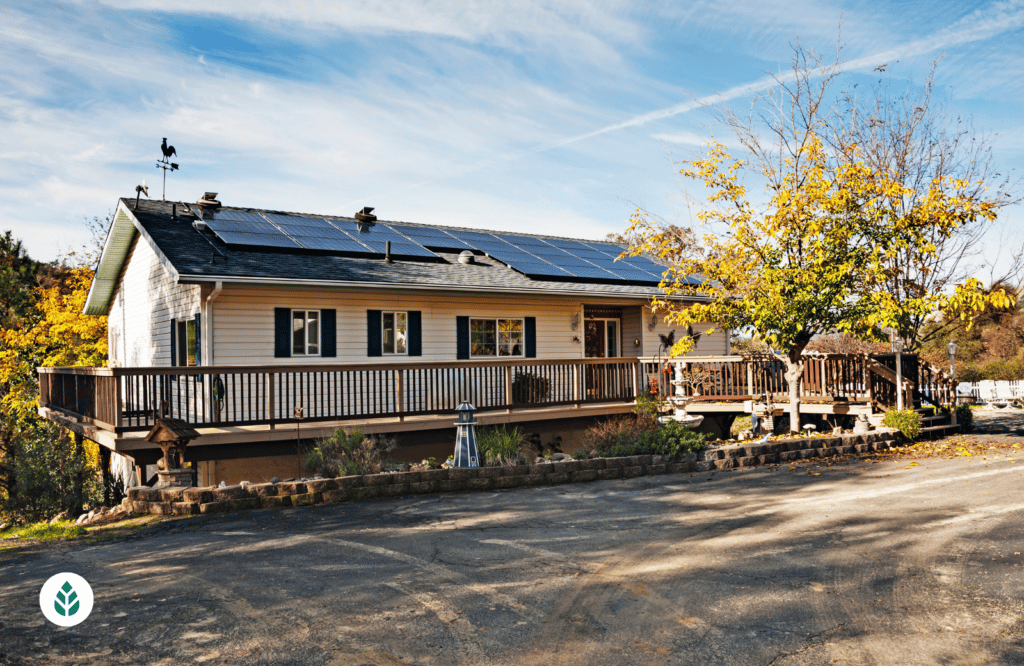
We should also mention that you’ll still see a financial benefit from your system even if you sell your home. Solar conversion raises property value by an estimated 4.1%, so you’re likely to get a significant ROI out of your installation regardless.16
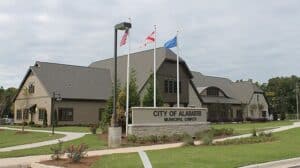 |
 |
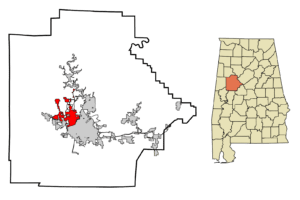 |
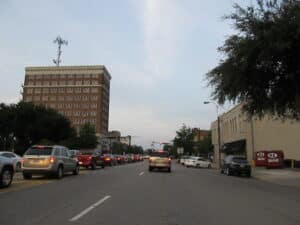 |
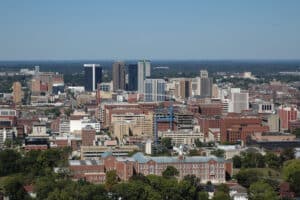 |
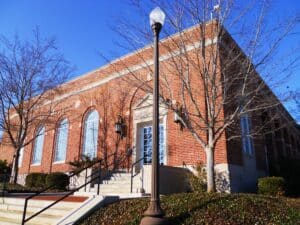 |
 |
 |
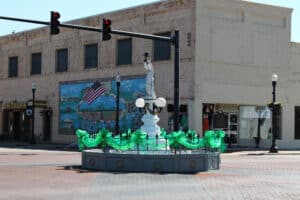 |
 |
You can also check out our guide to choosing a solar installer in AL for more general company recommendations outside of these cities.
FAQ: Solar Panels in Alabama
Below, we’ll answer some questions about the solar conversion process that we commonly see from Alabamans.
Unfortunately, Alabama has not enacted solar rights or easement laws yet, so homeowners associations (HOAs) can ban solar panels within their developments. They can also impose restrictions on where your panels can be installed. We recommend you check with your governing body or guidelines for solar rules before getting quotes if you live in an HOA.
Yes! Alabama doesn’t top the charts in terms of solar adoption, but residents who convert to this renewable energy source save more than those in most other states.
There are a few things the Yellowhammer State has going for it that make solar such a great option. First, it receives an above-average amount of sunlight each year, which pushes up the potential for production. Second, PV equipment is more affordable on a per-watt basis than in most other states. Finally, the electricity consumption is well above average in the state, so there is plenty of room to save money each month on energy bills.
The minimum expected lifespan of most tier-one PV panel brands is 20 years, but many will last for 25 to 30 years. Alabama does see some extreme weather that can reduce the effective lifespan of panels, but most residents should get around 25 years of life out of their panels.
Alabama does have a solar property tax exemption, so your taxes won’t go up just because you install solar. However, there is no state sales tax exemption, so you will need to pay taxes on all PV equipment you purchase for your home, as well as labor.
Comparing authorized solar partners
-
- Most efficient panels on the market
- National coverage
- Cradle to Cradle sustainability certification
- Great warranty coverage
- Expensive
- Customer service varies by local dealer
A+Best National Provider1985SunPower Panels25-year all-inclusive warranty
Having trouble deciding? Click below and use our process to receive multiple quotes instead:

 233k
233k  41k
41k  Subscribe
Subscribe 

